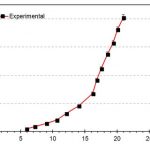In today's post, we're going to take a look at an application that we've recently helped a few different customers with with draft beer cans. We increasingly recommend that people use Graco's FG series air operated double diaphragm pumps for these applications. So what is pressure beer filling and why are Graco diaphragm pumps perfect for these applications? Let's take a closer look.
To get started, let's start with an overview of beer filling/canning technologies in the craft beer brewing space. While craft breweries have historically relied on draft beer and draft beer sales, the COVID-19 pandemic has totally changed the game. Suddenly, everyone needed to figure out how to put their beer in cans. There are two primary types of filling or canning – gravity and back pressure filling.
In a gravity filler, beer is supplied to the filler directly from the brite tank and depends on head pressure and liquid temperature to control filling. Although we use CO2 to purge cans and lower oxygen levels, because the can is open to the atmosphere, foaming can be difficult to control. This is especially true with increasingly carbonated products such as seltzers.
With a back pressure filler, we pump from the brite tank into a pressurized bowl in the filler. Fill the heads and lower them into the cans and seal them from the outside. The cans are purged and then pressurized with CO 2 , sealing them from the environment. This is important because the solubility of a gas in a liquid is directly proportional to the pressure of the gas above the liquid. By keeping the pressure constant throughout the filling, we can keep the CO 2 in solution and maintain carbonation levels and prevent foaming.
Historically, craft breweries have used gravity fillers because of their lower cost and greater availability. This is starting to change as back pressure filling has declined and more OEMs offer an attractively priced solution for smaller breweries.
So what does this mean for bombs? Well, as mentioned above, that means we need a pump that can power a pressurized filling bowl. While the workhorse of the craft brewery has historically been the centrifugal pump, we typically cannot develop the pressures necessary to feed the filling bowl with one.
So that puts us on a PD-type bomb. Looking at our toolbox, we have two main options – a Waukesha rotary lobe or a Graco AODD.
While the Waukesha universal pump can get the job done, there are some downsides. On the one hand, we have a general footprint. Typical Universal 18 or 30 pump sets will be between 36″ and 60″ in length and 24″ to 36″ in width. Rotary lobe pumps also feature a mechanical seal, which means an opportunity to pick up oxygen. We also have to be careful not to decapitate them. They also require three-phase power, which not all breweries have readily available. Finally, a PD pump set is not cheap, typically costing between $10,000 and $12,500 after adding gearmotor, base, and variable frequency drive.
Graco's FG series of AODD, on the other hand, is extremely compact and easy to use. Just connect your hoses, connect the air and you're done. We also don't have to worry about blocking an AODD. And there's no mechanical seal to let in oxygen. The push/pull action of an AODD is also low-shear and smooth on beer. Finally, Graco FG series pumps are about 1/3 the price of a comparable sized rotary lobe assembly.
So whether you're a brewer trying to decide between back pressure and gravity filling or you're an OEM designing the latest and greatest back pressure beverage filler, consider a Graco AODD. In addition to being compact, easy to use and cost-effective, Graco AODDs are gentler on beer and eliminate at least one source of oxygen uptake, while still handling the higher pressures required for backpressure beer filling.

Credits: https://triplexblog.com/2022/07/01/graco-aodd-case-study-counter-pressure-beer-filling/










